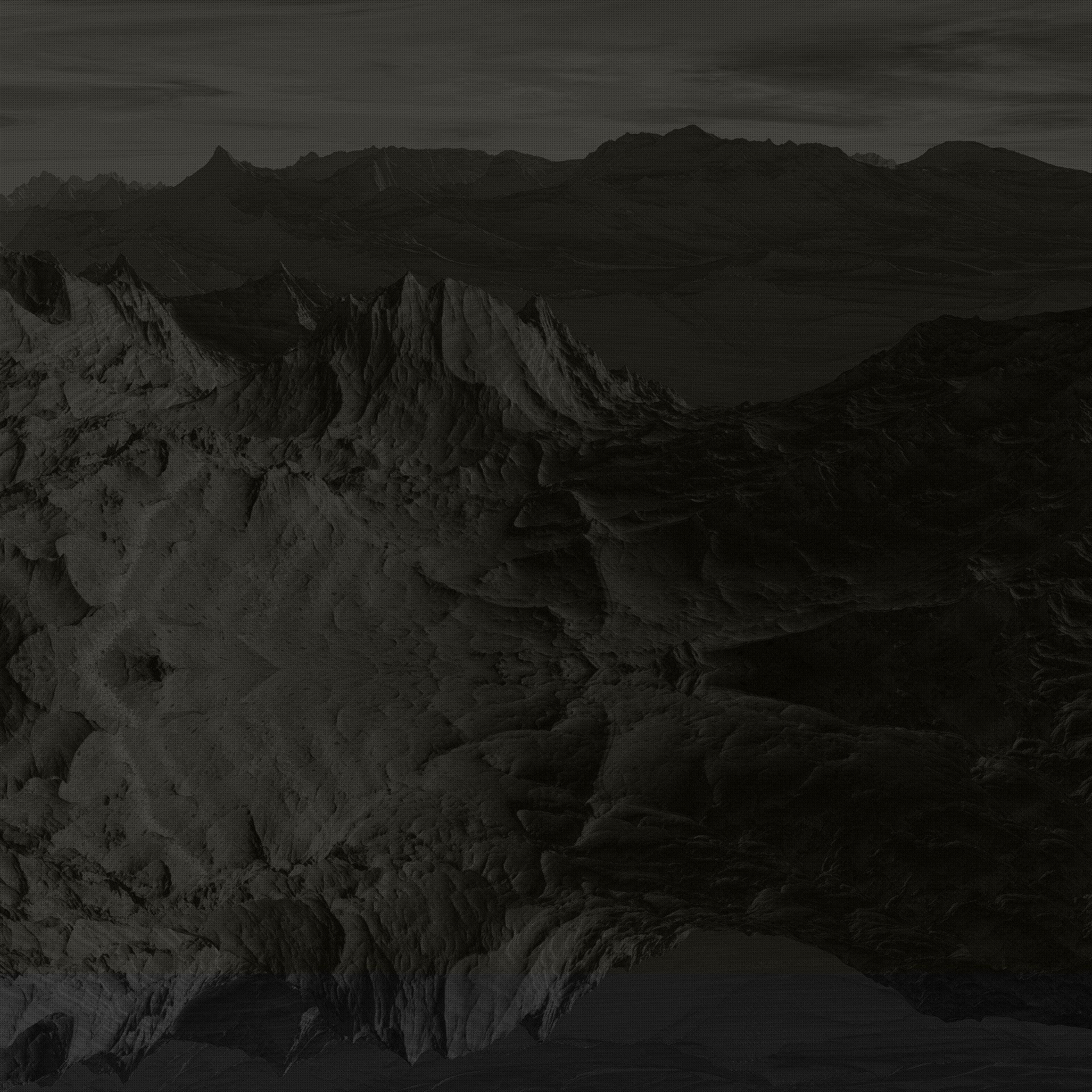Hello hello! We are going to talk about the camera, best friend of the layout artist, specifically, what fundamental aspects you must know to work with 3D cameras. We are going to review the technical aspects, ready?

For this post I will use the Watch Dogs Legion cinematic as an example.
Download the information of this post in .pdf:
1- THE CAMERA IS WEIGH, MY FRIEND.
Digital cameras, unlike those on set, are weightless. You can move them from here to there in the scene without getting tired arms or coming home exhausted, as many camera operators do. But does this really mean that the weight of the camera does not matter when we talk about 3D layout? Not at all, what's more, that weight is something that we, as layout artists, have to take into account. As a general rule, it is something abstract but that, well done, generates a much more credible layout. And how we do it?
By not having any parameters in the camera for it (at least to date I have never worked with any, if someone does please share it in the comments), what we do is work with the digital camera in a similar to how we would do it on set. When responding to a given weight, the 3D camera should also move accordingly at a slow pace, generating motion lags (eg, if a character moves too fast, the camera will arrive after him, to give it time) to react to displacement and generate logical camera movements with respect to its weight. I understand that this is all a bit abstract, so let's see it graphically:

2- And its always late
The cameras, as a general rule, will always arrive later than the characters/action that is happening. Why is that? As seen in the previous point. Imagine a real scene recorded on a set where two characters are talking and suddenly they turn around because something has caught their attention. Although everything is very well orchestrated so that the cameraman moves at the same time as them, it is very likely that the movement will end a little later. The camera is heavy, mate, as we have already said, and the cranes, travellings and various paraphernalia that accompany them are not exactly featherweight either. I like to imagine the camera as if it were a rock, and we have to move it from here to there, but it is heavy and uncomfortable to handle. If we manage to transfer that feeling to 3D, there are more polished scenes. So do we always have to make the camera arrive later, generating these movement lags with respect to the rest of the elements on the scene? Well, no, neither, especially in cartoons and animated films in general, this is usually quite ignored and the camera is very consistent with the general movement of the scene.

3- Organic and mechanical movements
Digital cameras can be a replica of a mechanical movement (cranes, travellings, panoramic shots...) which, of course, will always require a camera operator to put their eye and hand behind them; or organic movements (camera on the shoulder, among others), or a combination of both. It is interesting to analyze how they work in real-image cinema to later transfer that movement as faithfully as possible to the digital shot. If we talk about more organic movements, dynamic and freer cameras, we can focus on real-image film sequences that we like, paying attention to rhythm, breathing, movement from side to side and everything that catches our attention.
This Watch Dog cinematic is a perfect example of organic cameras, where movements are fast and very natural. In both types of movements we have to take into account accelerations and braking, no camera moves without a minimum process of acceleration and braking, and the rhythms of the narrative, which usually require one type of movement or another (and there is also a lot left in the artist´s hands). In a scene of destruction of a huge city, like the Marvel films, the cameras are going to be fast, very moving and organic. If, on the other hand, we have a calm scene, of conversation p.e, we can use organic cameras but with less sudden movements, and leave longer shots in editing.
We've come into this world to play, to test, to tinker with parameters, to use several different methods for the same shot and see what comes out (as long as production doesn't scold you for taking too long), so let's get witty and play.
4- Add movement to static cameras
We can leave a camera totally static, but adding a little movement is always interesting, even if the shot is static. From a few years to now this trend has become very evident, especially in Pixar movies, where the camera seems to "breathe". On live action film it is very rare for a camera to stay completely still. How did we get this? Adding a small movement from side to side, micro "shakes" that give life to the shot, or movements in several axes that cheer up that poor dead camera. Fully static shots are still necessary, they come in handy to decompress the action and are very interesting on an aesthetic level, but they are less and less common.

5- Lenses / Focal Length
Choosing the type of lens that the camera will have is a vital decision for the final appearance of the shot. In many shows these decisions are made during pre-production, and there is a guideline of which lenses to use, for example: for this film we will only use 35mm, 50mm and 80mm lenses, and it must be respected throughout the entire show production.
On other occasions, the use of the lenses depends on the layouter´s decision, who will select one or the other according to the shot. In special effects cinema there are full CGI shots (nothing was shot on set, everything is digital) and shots with plates (material recorded on set); in the former, the lens is selected when the shot is made, in the latter, the same digital lens that was used in filming must be used in maya.
Let's go over the types of lenses and their narrative uses:

6- Diaphragm opening / F.stop
Closely related to the lenses, the opening of the diaphragm will greatly vary the result in the image, and we must take it into account as much as the selected lens. In 3D, f-stop is often a compo concern, as it tends to change in Nuke long after it goes through layout. But beware, in VFX cinema we are usually the ones who select the diaphragm, information that we then pass on to the rest of the departments and is defined in the filming accountsheet (documents with the parameters of the cameras that were used on set).

The diaphragm is the part of the lens that limits the entry of light into it and is measured by the F number. They are inverse concepts, the larger the F number, the smaller the aperture of the diaphragm and, therefore, the less light enters it.

Animating 3D cameras encompasses a lot of aspects to take into account, including working with animation curves (if you're interested in me doing a post on this topic, leave me a comment and I'll take it into account, since it's too long to add to this ). Lastly, we are going to have a bit of fun together, I show you curiosities about this cinematic that have blown me away. The level of hallucination I felt when I saw it for the first time was incredible, in my opinion it is one of the most amazing audiovisual works of recent years. What do you think?
Knowing this, the subsequent analysis is completely and absolutely based on my opinion when seeing it and the things that I have extracted from it. I have not read or seen any other analysis, I have not played the video game and I have no idea what the story is about beyond what is told here (if there is one thing I want to be honest). Let's rock it!

Little trick! I imagine that many of you already know it, but in case someone doesn't I want to leave it here: you can see any YouTube video frame by frame if you use the period (later frame) and the comma (previous frame). For this cinematic it is very worthwhile, so you can discover gems that have been hidden in certain frames, as well as analyze the animation and camera work and pay attention to the details of the set and the recreation of London, which is wonderful.
Things I loved about the Watch Dogs Cinematic


Of course, there are many interesting elements, the lighting, the set dressing, the animation... but I wanted to show the ones that I liked the most. If you have come this far reading, thank you very much! As always, for any doubt, suggestion, clarification or cyber greetings, my messages are open. Thank you very much also to the people who have written to congratulate me on the blog or to give me ideas for new posts, I am very happy to know that you like it and it gives me energy and good vibes to continue doing more :)
A big hug, take care of yourselves and eat fruit



Hey, Irene. Thanks for the post. I like your narrative style, it's entertaining with a small measure of humor. That was truly informative and especially helpful for the beginners. So I have a note about the technique of "late camera". In Russian we call it "catch up", or sort of, I doubt to get equivalent term in English. As a layout artist, I used to work on two animated films in close collaboration with three directors, and all of them denanded me to use cinema cameras with a catch up effect, especially in action sequences. Anyway, it is only my experience, but I am glad to share it with you and future visitors. Thanks again for info.